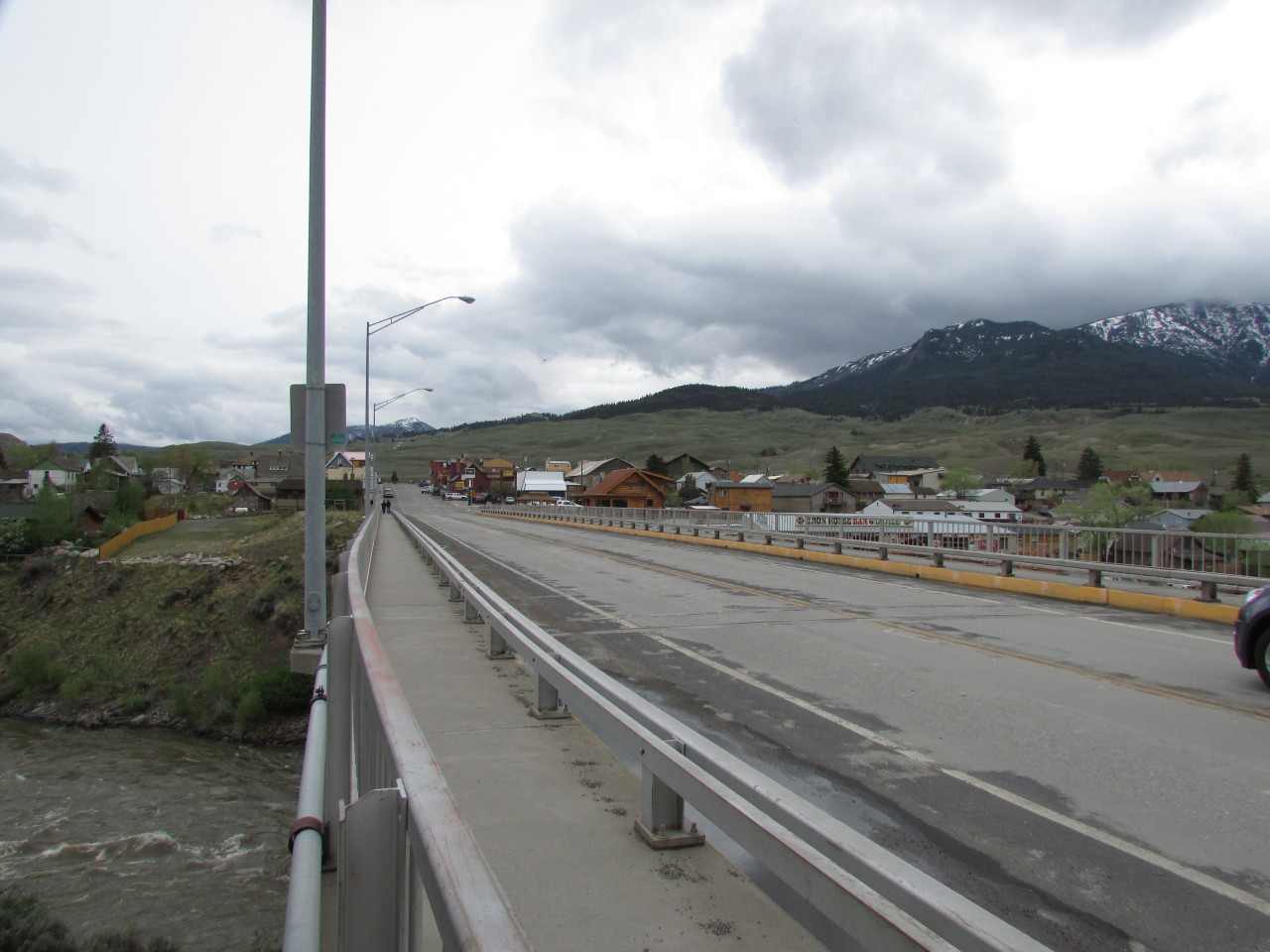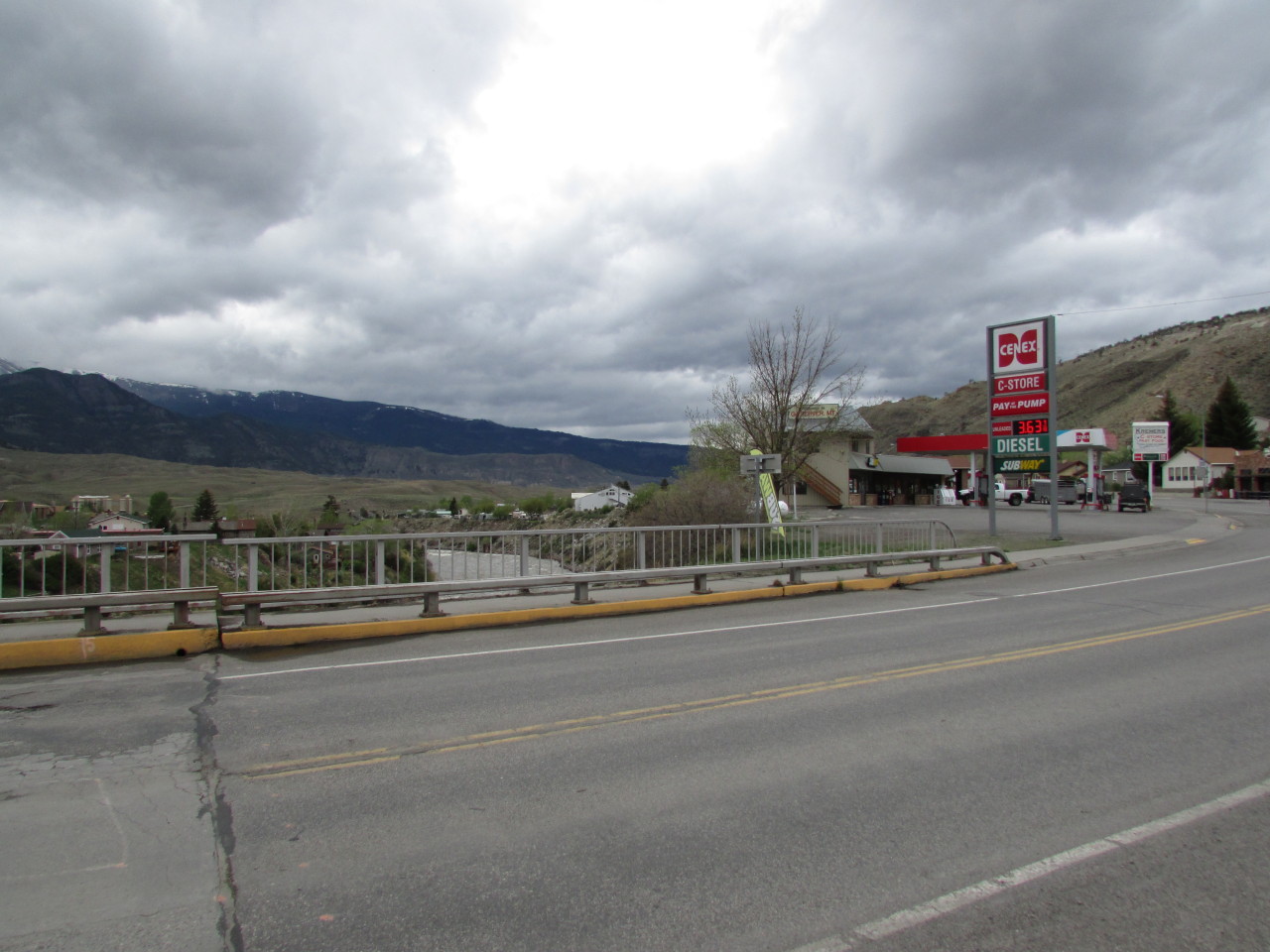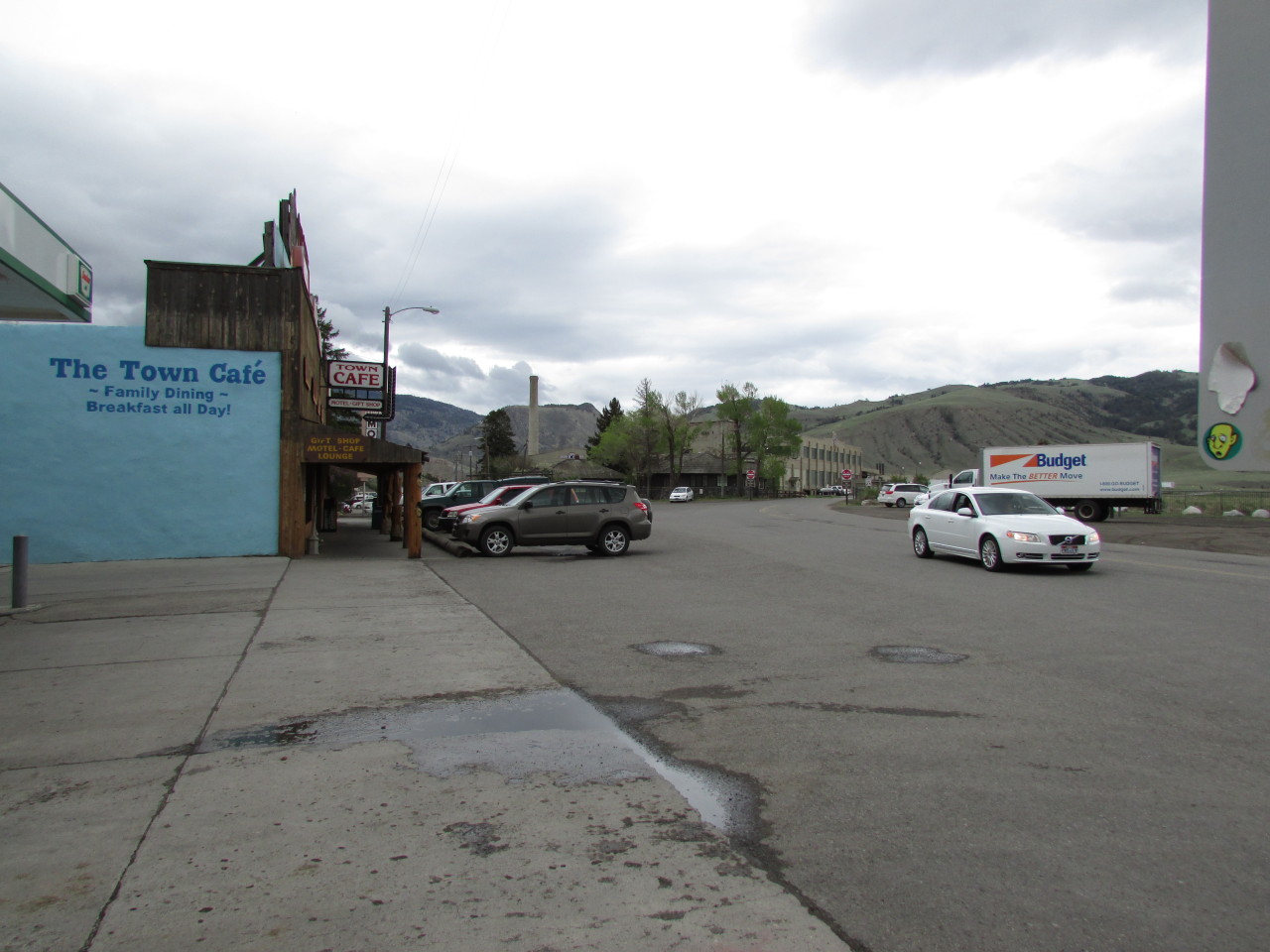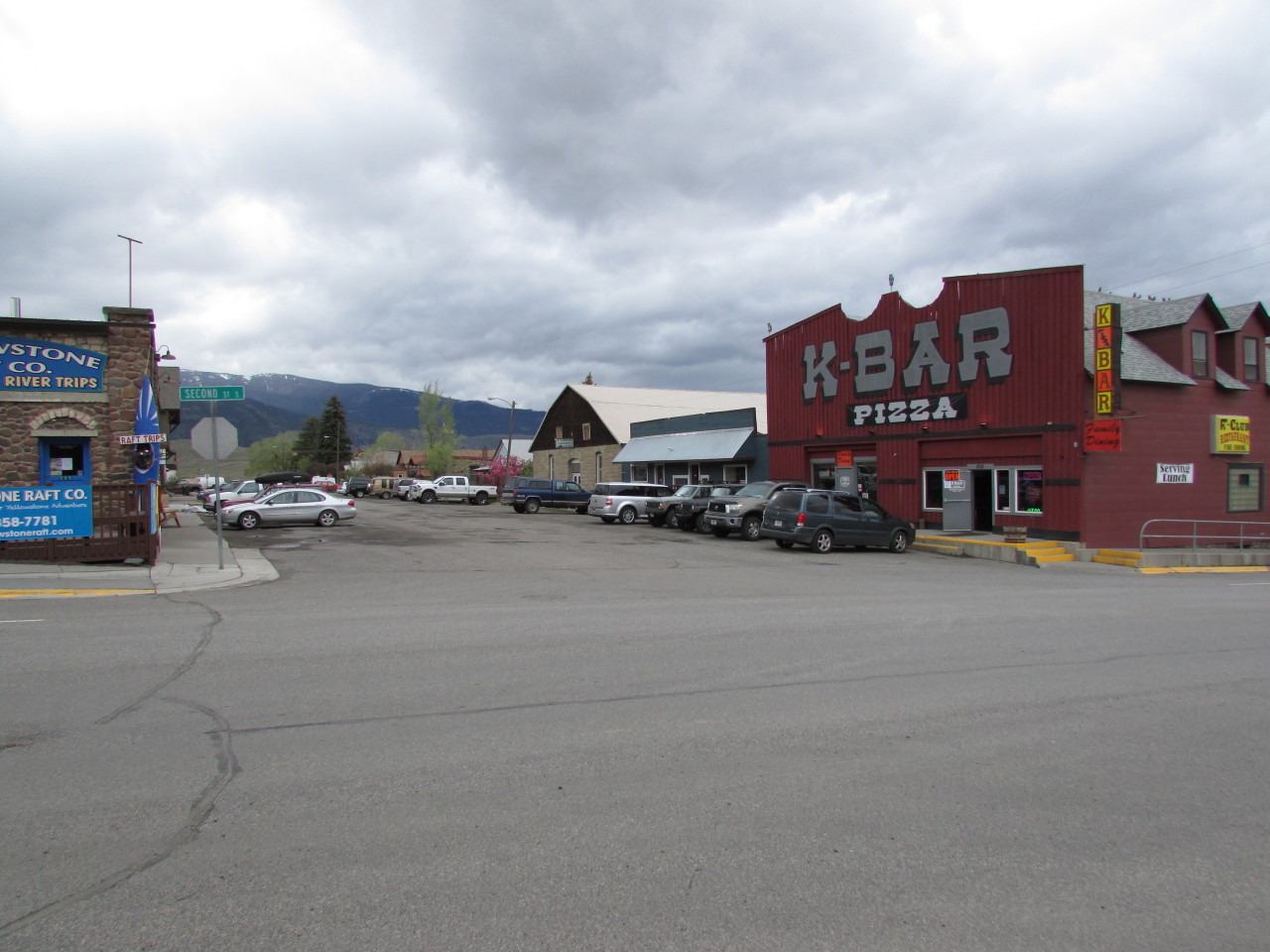Gardiner Place-As-Text
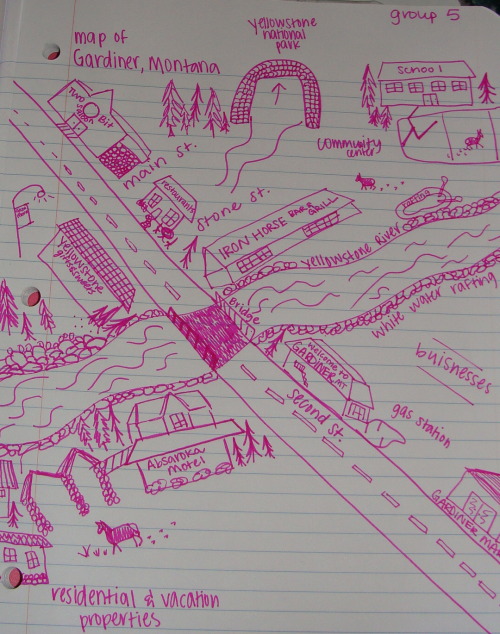 The physical setting of Gardiner, Montana is extremely rural. Its physical location directly puts it outside the park. Although a majority of Montana (and Wyoming) is surrounded by mountains and hills, each landscape is different. In this case, the mountains along the city’s side are covered in a large amount of vegetation and the side opposite of Yellowstone National Park (if you’re facing out from Absaroka Lodge) has large hills with little to no vegetation.
The physical setting of Gardiner, Montana is extremely rural. Its physical location directly puts it outside the park. Although a majority of Montana (and Wyoming) is surrounded by mountains and hills, each landscape is different. In this case, the mountains along the city’s side are covered in a large amount of vegetation and the side opposite of Yellowstone National Park (if you’re facing out from Absaroka Lodge) has large hills with little to no vegetation.
Although the town is surrounded by rolling hills, it’s fairly flat (with a river going doing its center). It is divided by the Yellowstone River, which sits low in a canyon. Consequently, this division created by the river has created a division of the buildings in the town. The built environment is much like Jackson Hole with saloon type and old west type buildings, although, it might have been built this way when the town had was founded and never been replaced (they look dated). There is some new construction, most of which is on the side of the river opposite of the park that seems newer but mimics the old west style to draw in tourists.
The built environment is hard to delineate between residences and businesses. There is a high concentration of bars, restaurants, and gift shops towards the park, while hotels/motels and residential areas are built along the river bank and the opposite side of the river. Tourists make up a majority of the social environment because Gardiner is literally right outside the park. Unlike Jackson, there is a larger presence of the locals because a number of them live in the town itself. There also seems to be a very strong sense of community despite the controversies involving wolf and bison.
Gardiner, like Jackson Hole, resides in a valley which provides a form of natural protection from the elements. Meanwhile, the climate is very different in Gardiner. The precipitation that the mountains provide affects the warm and cold weather. The town is built alongside the river, which was vital at the time in which the town was built (transportation, trade, water, etc). Also, the landforms affect the existence of the town because of Yellowstone National Park (outdoor activities that include white water rafting and zip lines). Most of the people we encountered were employed in industries catering to tourists. Everyone here seems to be happy to answer whatever questions we might have and their kindness seems genuine. They do not seem to strive for large houses and fancy cars. Instead, they want to provide visitors with education to better Yellowstone National Park. We did not encounter as many tourists because it is not peak season (they are just coming out of winter – the off season).
They are packaging themselves as the old west for the benefit of tourism through the authentic old west architecture and construction of the town. At the same time, they are not trying to be something they’re not. Their way of life hasn’t changed (they are still farmers, ranchers, and living off the land). The current businesses cater to the needs of the activities throughout the park and places for them to come home to at the end of the day. The housing is appropriate for living within your means and living a simple life. They try to do things to strengthen the community such as plays and basketball games at the high school.
The wildlife is the heart of Gardiner. Consequently, this has created a division between the town’s people starting controversies such as wolf vs. ranchers and the buffalo. These issues are reoccurring themes in public documents and conversations.

